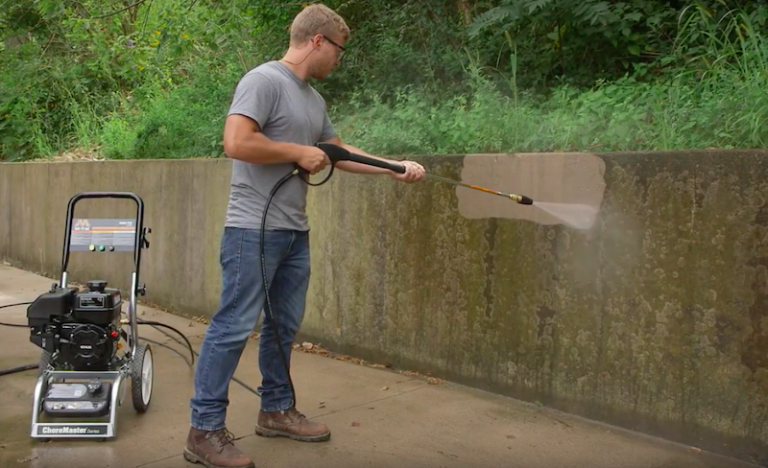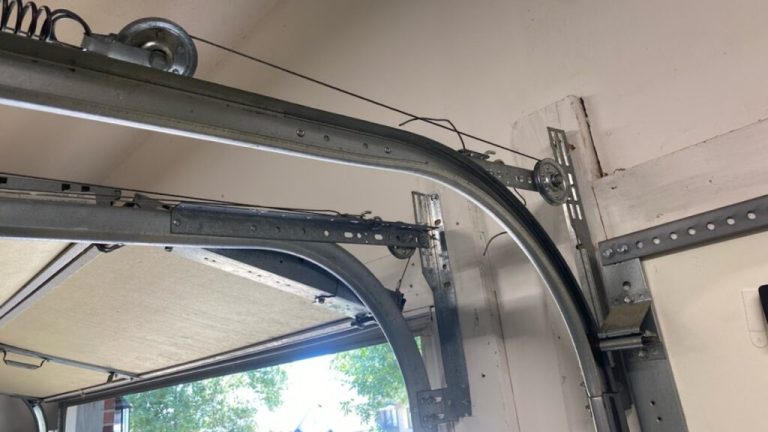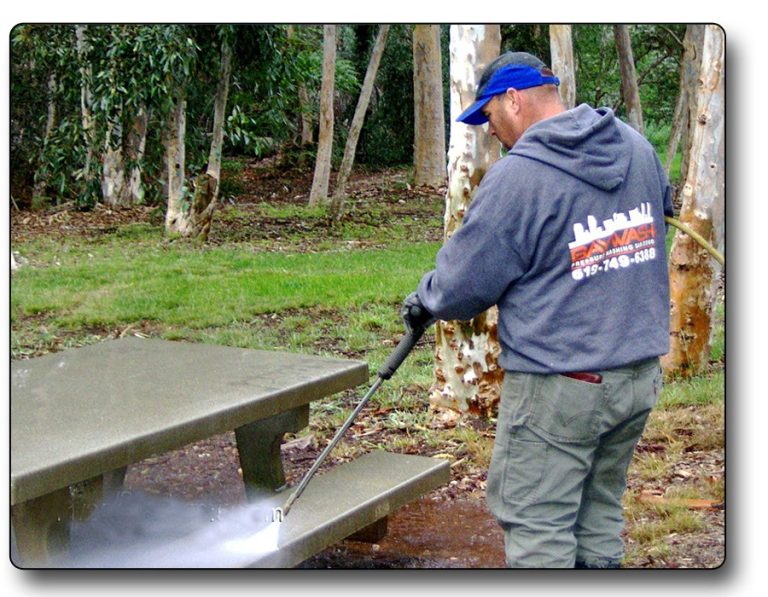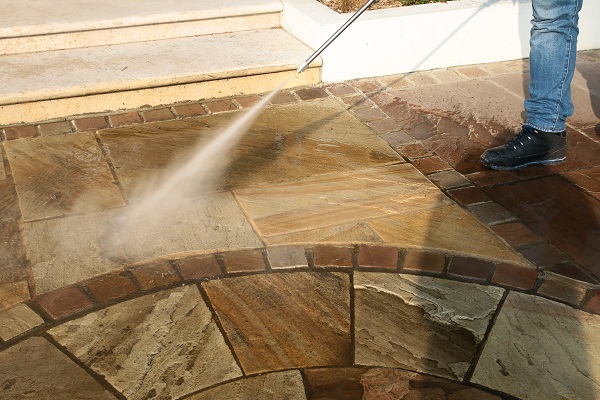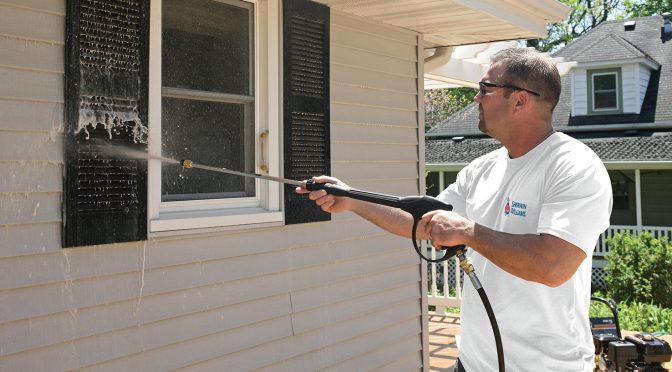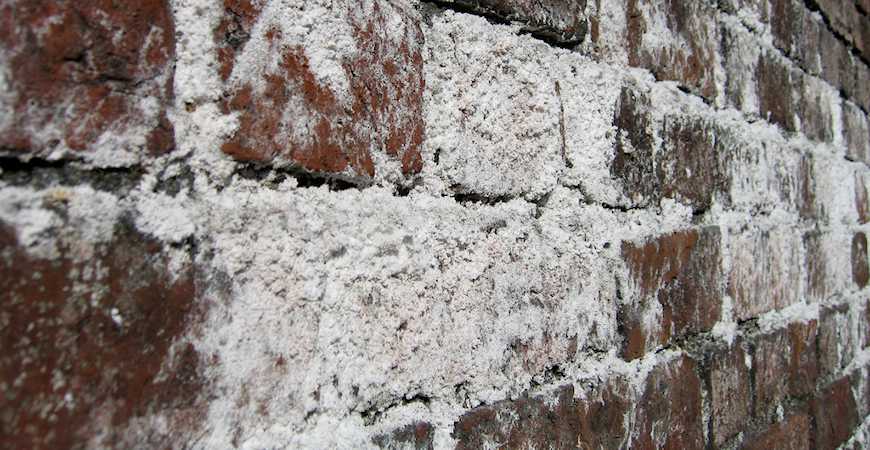
Efflorescence — the powdery white, chalk-like substance that often appears on brick and concrete — can make even the cleanest surfaces look stained and neglected. So if you’ve spotted these unsightly marks around your home or business, you might be wondering: Can power washing remove efflorescence? The answer is yes — but it depends on the method you use, and in some cases, extra steps may be required. 🧐🧼
In this article, we’ll explain what efflorescence is, why it forms, and how you can safely and effectively remove it using power washing (and a little help from chemistry). 🧪💦
🧱 What Is Efflorescence?
Efflorescence is a white crystalline deposit made up of water-soluble salts. It appears when moisture inside concrete, brick, or stone rises to the surface and evaporates — leaving the salts behind.
You’ll usually find efflorescence on:
- Brick walls
- Concrete foundations
- Sidewalks and driveways
- Stone retaining walls
- Pavers and masonry joints
It’s not mold and doesn’t usually damage the surface — but it’s ugly, and it signals that there may be ongoing moisture issues. 😬
💧 What Causes Efflorescence?
Efflorescence is the result of a three-part chemical and environmental process:
- Presence of water-soluble salts in the masonry or mortar
- Moisture that dissolves those salts
- Evaporation that draws them to the surface, leaving the white residue
Common causes include:
- 🌧️ Rain or snow exposure
- 💧 Poor drainage or grading
- 🏠 Trapped construction moisture
- 🚫 Sealing before the material is fully dry
The good news? Power washing can help — if done properly.
🚿 Can Power Washing Remove Efflorescence?
Yes — to a degree. Power washing can help dislodge and rinse away much of the surface-level efflorescence. But it may not remove all of it on the first try, especially if the deposits are thick, baked in by the sun, or have been sitting for a long time.
For best results, power washing should be combined with special efflorescence cleaners or acidic solutions designed to break down the mineral content. 🧪
⚠️ Caution: Don’t Use Just Water and High Pressure
Blasting efflorescence with high pressure alone is not a great idea. It might:
- Force salts deeper into the surface 🧱⬇️
- Etch or damage delicate stone and brick 🚫
- Leave white streaks or patches behind 🧼⚠️
Instead, pair low-to-medium pressure with a targeted efflorescence remover or diluted muriatic acid — but use caution and proper PPE. 🥽🧤
🧰 Step-by-Step: How to Remove Efflorescence with Power Washing
Step 1: Dry Scrub the Surface (Optional)
Use a stiff-bristled broom or masonry brush to remove as much of the dry residue as possible before getting the area wet.
Step 2: Apply a Specialized Efflorescence Cleaner
Look for commercial products labeled for masonry or efflorescence removal. Apply according to the manufacturer’s instructions. Avoid acidic cleaners on colored concrete unless approved.
Step 3: Let the Solution Sit
Give it 5–10 minutes to break down the salt deposits. Do not let it dry on the surface.
Step 4: Use a Power Washer with Medium Pressure
Use a 25-degree tip and aim for 1,200–2,000 PSI. Keep the nozzle 12–18 inches away and rinse thoroughly. 🌊
Step 5: Repeat If Necessary
Some areas may need a second treatment or spot scrubbing.
Step 6: Neutralize the Surface
If you used an acid-based cleaner, rinse again with a baking soda and water solution to neutralize any leftover acidity.
🛡️ How to Prevent Efflorescence from Coming Back
While power washing is great for removing existing deposits, preventing future buildup is even more important:
- 🧱 Seal masonry surfaces with a breathable, water-repellent sealer
- 🌧️ Improve drainage around the foundation or structure
- 🏡 Avoid overwatering plants near brick or concrete
- 🔧 Repair cracks in mortar joints that let moisture in
- 🪟 Ventilate basements or crawl spaces to reduce internal moisture
Moisture is the root cause — eliminate that, and you’ll eliminate efflorescence over time. 💧❌
🧠 Bonus Tips for Success
- Avoid pressure above 2,500 PSI — it can damage most brick or stone
- Always test a small area first to make sure there’s no discoloration
- Never use metal brushes — they can leave behind rust stains
- Use plastic sheeting to protect nearby surfaces or landscaping 🌿
✅ When to Call a Professional
If the efflorescence keeps returning or you’re not confident using acidic cleaners, it may be time to call in a professional. They’ll use the right solutions and tools to clean your surfaces thoroughly without damaging them — and may also help diagnose underlying drainage issues. 👷♂️🔍
🏁 Final Thoughts
Power washing can remove efflorescence — especially when paired with the right cleaner and careful technique. While it might take a little more than water pressure alone, a clean and consistent approach will help your brick, concrete, or stone look fresh again. ✨
Just remember: treat the cause and the symptoms. With the right steps, you can say goodbye to that white haze and keep your surfaces looking pristine for years to come. 💪🧱💦

